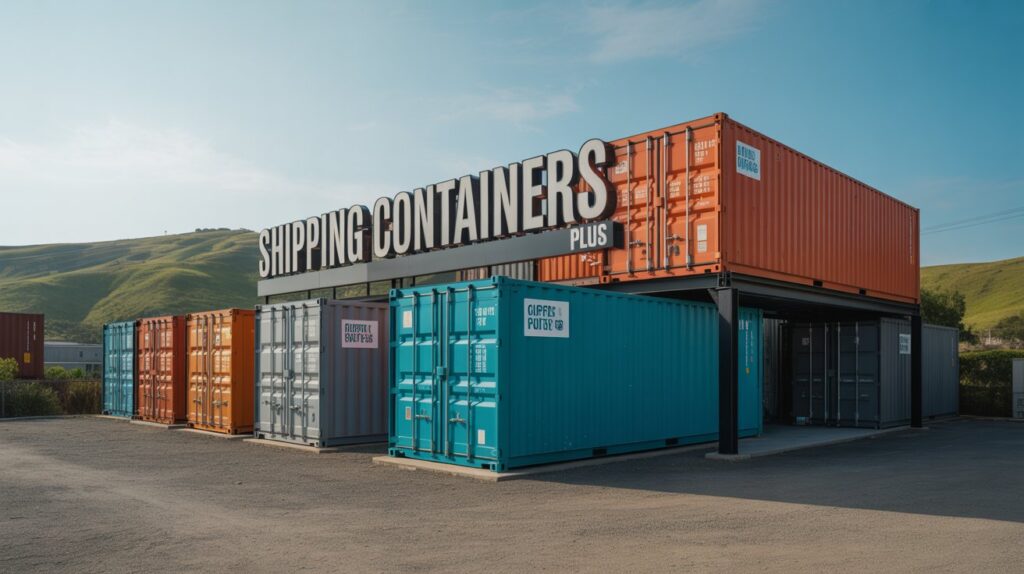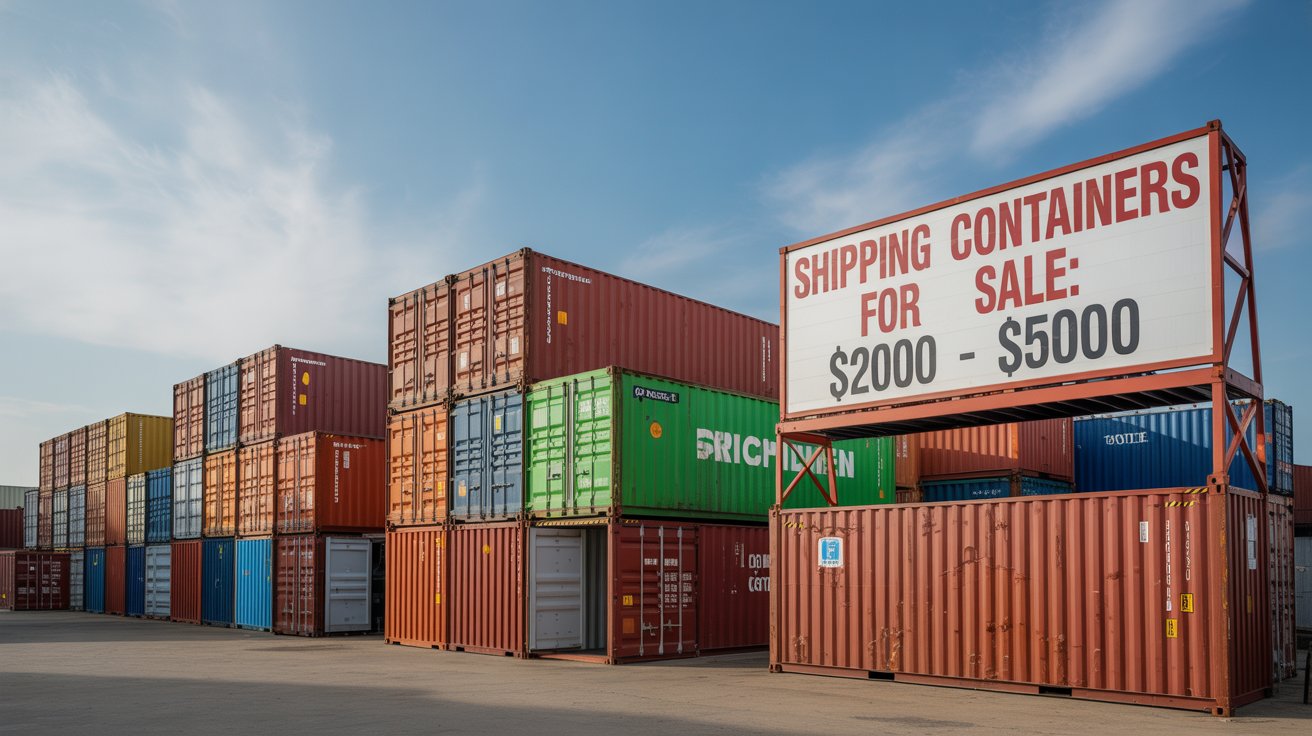Have you been wondering where you can buy a shipping container? Whether you’re considering using it for unique storage solutions, creating a tiny home, or starting a business, getting your hands on a shipping container might seem challenging.
When it comes to purchasing a shipping container, there are several avenues you can explore, including popular online marketplaces like eBay and Amazon, as well as specialized retailers that focus specifically on shipping containers
Understanding the Basics of Shipping Containers
Before making your purchase, it’s essential to understand what a shipping container is and why it might suit your needs. Shipping containers, originally used for transporting goods across seas and countries, are now being repurposed for various uses. Their robust build and straightforward design make them suitable for multiple applications.
Types of Shipping Containers
There are several types of shipping containers, and you should choose based on your intended use.
- Standard Containers
These are the most common types, available in standard sizes like 20 feet and 40 feet. They are used for various purposes, from storage to construction. - Refrigerated Containers
Known as “reefers,” these containers are used for transporting temperature-sensitive goods. If your purpose involves keeping items cold, this might be the right choice. - Open-Top Containers
Perfect for oversized cargo, these containers have a removable top, allowing easy loading and unloading of goods. - Flat Rack Containers
Ideal for heavy machinery and equipment, these containers have collapsible sides for easy storage when not in use. - High Cube Containers
Offering extra headroom, these containers are a great option if you need extra storage space or plan to create a home or office setup.
Condition of the Containers
Shipping containers come in different conditions, impacting pricing and suitability:
- New (One-Trip Containers)
These containers are usually in excellent condition, having made only one trip. They’re slightly more expensive but often worth the cost for longer-term projects. - Used (Cargo-Worthy or Wind and Watertight)
These have been in circulation longer. While they might show signs of wear, they’re still suitable for storage and other non-transport purposes. - As-Is Condition
Sold for low prices, these might need significant repairs. They can work if you plan extensive modifications.
Where to Buy Shipping Containers
Now that you know what you’re looking for, let’s explore the different options you have for purchasing your container.
Online Retailers
The digital age has made it incredibly easy to purchase shipping containers online. Several platforms offer a wide range of options with ease of browsing and competitive pricing.
- eBay and Amazon
Yes, even on these popular platforms, you’ll find vendors selling new and used containers. While purchasing from these sites, ensure the seller has good reviews and offers detailed product descriptions. - Specialized Container Retailers
Businesses like ContainerOne and ITS ConGlobal specialize in selling shipping containers online. They often provide detailed specifications and even offer customization options.
Direct from Shipping Lines
Purchasing directly from shipping companies is another excellent option, especially if you’re looking for better pricing through bulk purchases or particular types—such as brand-specific containers like Maersk or CMA CGM.
- Maersk and MSC
Major shipping lines occasionally sell off their excess or older containers. It’s worth contacting them directly. - COSCO and Evergreen
Other major companies that might offer direct sales. Although this requires more research and communication, it can lead to cost savings.
Local Dealers
Another excellent method for purchasing a shipping container is buying locally. This reduces transportation costs and allows you to inspect the container before buying.
- Local Container Yards
Most cities have container yards that sell to individuals. Visit these places to seek advice and check the containers physically. - Classified Ads
Websites like Craigslist sometimes list containers for sale locally, often at a reduced price.

Factors to Consider Before Purchasing
Buying a shipping container is not just about choosing the right place; it involves considering several factors for a smooth purchase.
Budget Considerations
Shipping containers vary widely in price based on size, condition, and source. Budgeting for both the purchase and delivery is crucial.
| Condition | Typical Price Range (20ft) | Typical Price Range (40ft) |
|---|---|---|
| New | $3,000 – $5,000 | $6,000 – $7,500 |
| Used | $2,000 – $3,000 | $3,500 – $5,000 |
| As-Is | $1,000 – $2,500 | $2,500 – $4,000 |
Inspecting the Container
If possible, inspect the container before purchase:
- Check for Structural Integrity: Ensure there are no major dents or damage that could compromise safety.
- Look for Rust: Some surface rust is common, but extensive rusting can indicate compromised integrity.
- Examine Doors and Seals: Ensure they open and close properly to prevent water ingress.
Delivery and Logistics
Factor in the cost and feasibility of delivery. Some locations may have restrictions on where a container can be placed, and accessing remote locations may require specialized equipment. Ensure clarity on who covers delivery costs and responsibilities.
Legal and Zoning Regulations
Before purchasing, you should also consider the legal aspect of owning and using a shipping container. Many people overlook zoning laws and end up with penalties.
Zoning Laws
Local zoning laws could restrict where you place containers, especially for non-traditional uses such as residential or business structures. It’s essential to consult local city planning or zoning offices to understand the limitations or requirements in your area.
Building Permits
Using a shipping container for construction or living might require a permit. Regulations can be stringent, depending on your location, and failure to comply may lead to fines or orders to remove the container.

Customization and Modification Options
Containers aren’t just about storage; they offer versatile spaces that can be highly customized. Once you’ve purchased your container, consider how you might want to alter it for your intended use.
Insulation and Interior Finishing
If you’re turning your container into a livable space or office, consider insulation to control temperature. For finishing, options range from wood paneling to drywall, based on your desired look.
Windows and Doors
Adding windows and doors is a common modification for containers used for living or workspace. It’s essential to work with specialists to ensure structural integrity is maintained.
Plumbing and Electrical
For those planning to live or work in a container, installing plumbing and electrical systems is crucial. Professional installations ensure safety and compliance with local codes.
Benefits of Using Shipping Containers
Far more than just storage, the benefits of containers are outstanding and diverse:
- Durability: Built to withstand harsh ocean conditions, containers are incredibly durable with minimal maintenance.
- Environmentally Friendly: Repurposing shipping containers is an eco-friendly way to recycle and minimize waste.
- Versatility: From pop-up stores to homes, there seems to be no end to the possibilities of container use.
- Cost-Efficiency: Typically more affordable than traditional building materials, containers are cost-effective while offering robust project solutions.
Final Thoughts
As you embark on your quest to find the perfect shipping container, remember that thorough research and evaluation are your best friends. Whether you buy from online platforms or local dealers, ensure you understand your needs and comply with local regulations to avoid surprises along the way. With the right approach, your shipping container will transform dreams into reality, providing solutions that standard structures cannot match.

